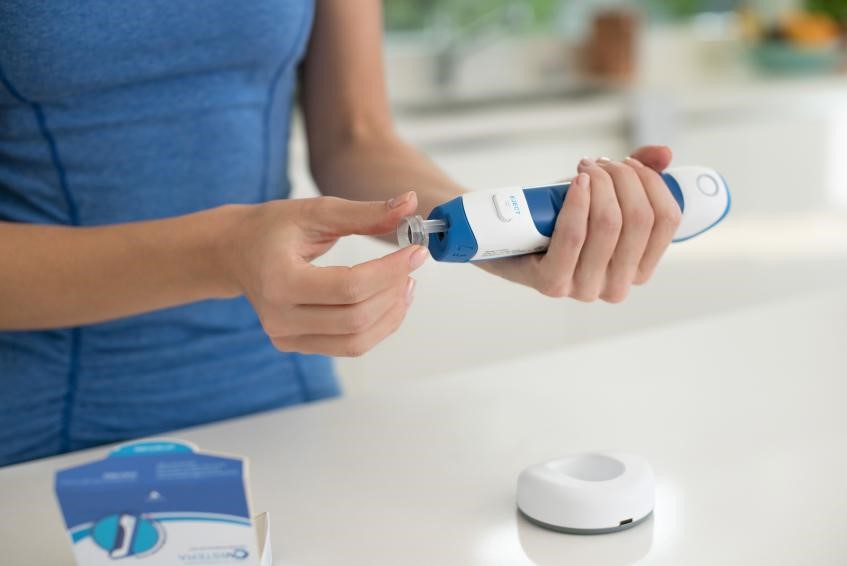Can You Inject Without the Needle?
A Pharmapack 2018 speaker explains a new needle-free approach that could suit biologics and support digital health.
Patients aren’t typically thrilled by the prospect of needles, and sharps can pose hazards for patients and caretakers. So, could an injectable device be developed without a needle?
Portal has developed a needle-free injector based off jet-injector technology, which is essentially a high-speed jet of drug that is much smaller than a needle and can deliver up to 1 mL to the subcutaneous space, the company reported.
Andrew Coats, Andrew Coats, senior director of engineering at Portal Instruments
“The rise of biologics to treat chronic conditions and the push for home administration means more people are taking medication on a regular basis, in their home,” Coats told MD+DI. “Since the chemical structure of biologics makes them extremely susceptible to the harsh conditions of the gastrointestinal tract, subcutaneous injections via an IV or in-home injection is often the standard delivery method.”
However, fear of needles can interfere with administration and ultimately patient compliance. “Needle anxiety along with needle phobia is quite prevalent and is documented to be experienced by both children and adults,” he said. 1, 2, 3 “Needle anxiety and phobia can result in a host of deleterious consequences, including vaccination non-compliance and avoidance of healthcare.”1, 2
For instance, a 2012 survey showed that “20% of RA sufferers report that they would not consider using a medication that required self-injection,” he pointed out. 3 “Needle anxiety goes beyond physical pain. Some patients dislike the stigma of sickliness associated with needle usage, while others are afraid of not being able to properly self-administer injections. Parents living with children in the household also fear that children may accidentally stumble across a needle-based device and hurt themselves.”
Alternatives to needles could bypass such fear. “Portal believes we can answer this challenge by removing the needle and by connecting the device to our digital health platform to provide reminders, coaching, and communication, all leading to a better overall experience,” Coats said.
Portal’s approach is a next-generation, needle-free injector, he explained. “What is unique about the Portal system is that it uses a computer-controlled linear actuator to pressurize the medication and inject it in a very fine liquid stream (about the size of a strand of hair). The entire injection takes less than half a second. The algorithms within the device allow for injections at a specific depth within tissue, and the release of medication is precisely controlled during the injection process—fast at first and then slow.”

Other attempts to eliminate the needle have been made, but Coats pointed to concerns. “Historically, needle-free devices used a mechanical means (e.g., a high-powered spring, compressed air, or gas cartridges like CO2 or Nitrogen) to generate the needed energy to inject the shot,” said Coats. “Unfortunately, it also sounded like an ‘explosion’ and left patients feeling like they got punched.”
And there’s another concern with injecting biologics. “A key consideration in the development of formulations for subcutaneous administration is the limited volume (1 to 2 mL) available in the subcutaneous space 4, 5, which calls for the development of highly concentrated, stable formulations of medications intended for subcutaneous delivery,” he said. 4 “This introduces a difficult drug delivery challenge–at high concentrations of drugs (>100 mg/ mL), the viscosity of formulation increases exponentially.6 In addition, biologic drugs need to be stored at temperatures between 2 to 8 °C and these low temperatures result in an additional increase in drug viscosity.6This unique relationship between concentration, temperature, and viscosity introduces a set of specific requirements for any drug delivery mechanism employed. Common problems reported with subcutaneous injectors include the high force requirements to eject highly viscous formulations and a prolonged injection time.”

Coats said that Portal’s solution is “quiet, fast, and adaptable to both viscosity and temperature of the medication.”









